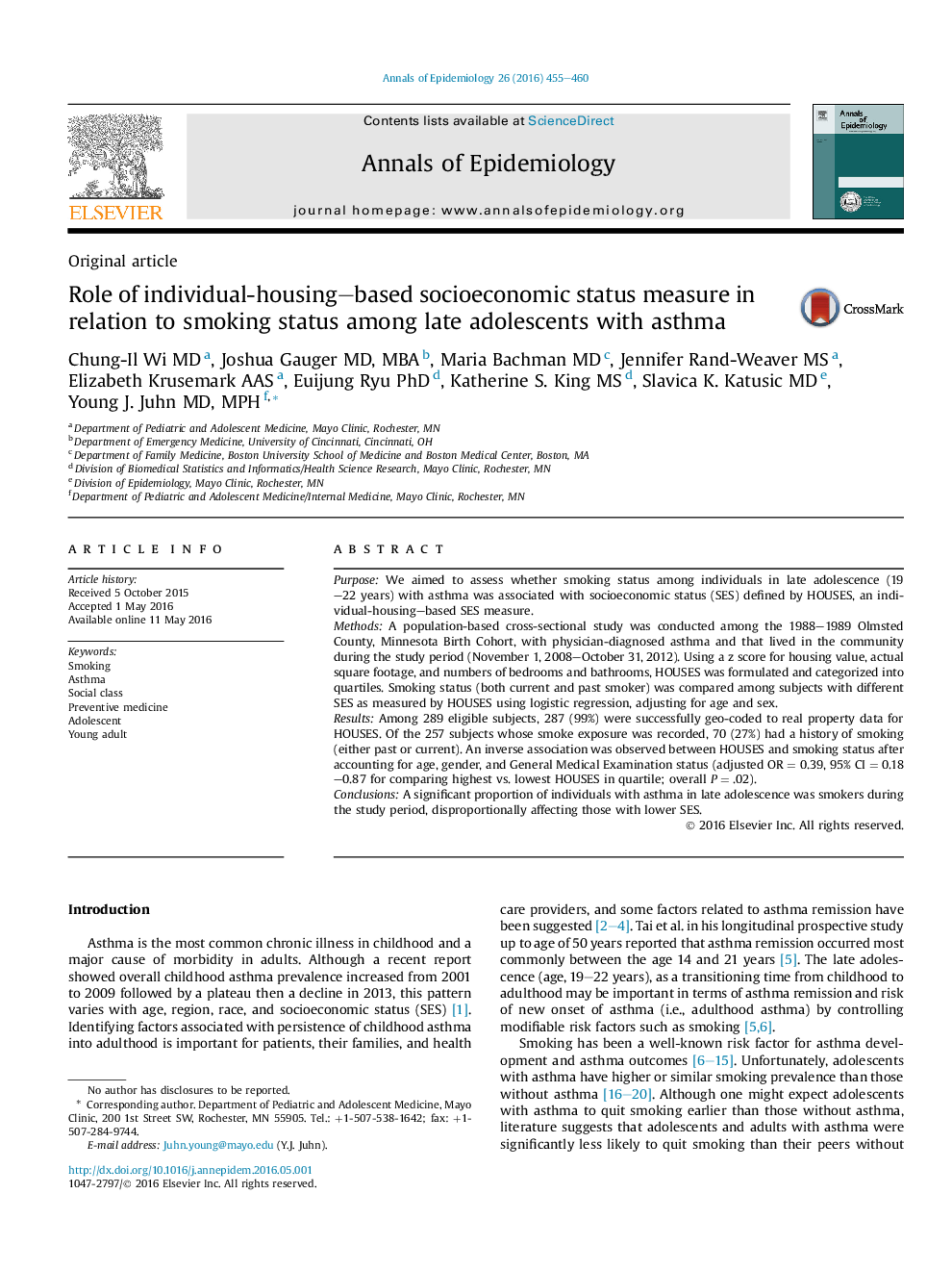| Article ID | Journal | Published Year | Pages | File Type |
|---|---|---|---|---|
| 3443612 | Annals of Epidemiology | 2016 | 6 Pages |
PurposeWe aimed to assess whether smoking status among individuals in late adolescence (19–22 years) with asthma was associated with socioeconomic status (SES) defined by HOUSES, an individual-housing–based SES measure.MethodsA population-based cross-sectional study was conducted among the 1988–1989 Olmsted County, Minnesota Birth Cohort, with physician-diagnosed asthma and that lived in the community during the study period (November 1, 2008–October 31, 2012). Using a z score for housing value, actual square footage, and numbers of bedrooms and bathrooms, HOUSES was formulated and categorized into quartiles. Smoking status (both current and past smoker) was compared among subjects with different SES as measured by HOUSES using logistic regression, adjusting for age and sex.ResultsAmong 289 eligible subjects, 287 (99%) were successfully geo-coded to real property data for HOUSES. Of the 257 subjects whose smoke exposure was recorded, 70 (27%) had a history of smoking (either past or current). An inverse association was observed between HOUSES and smoking status after accounting for age, gender, and General Medical Examination status (adjusted OR = 0.39, 95% CI = 0.18–0.87 for comparing highest vs. lowest HOUSES in quartile; overall P = .02).ConclusionsA significant proportion of individuals with asthma in late adolescence was smokers during the study period, disproportionally affecting those with lower SES.
